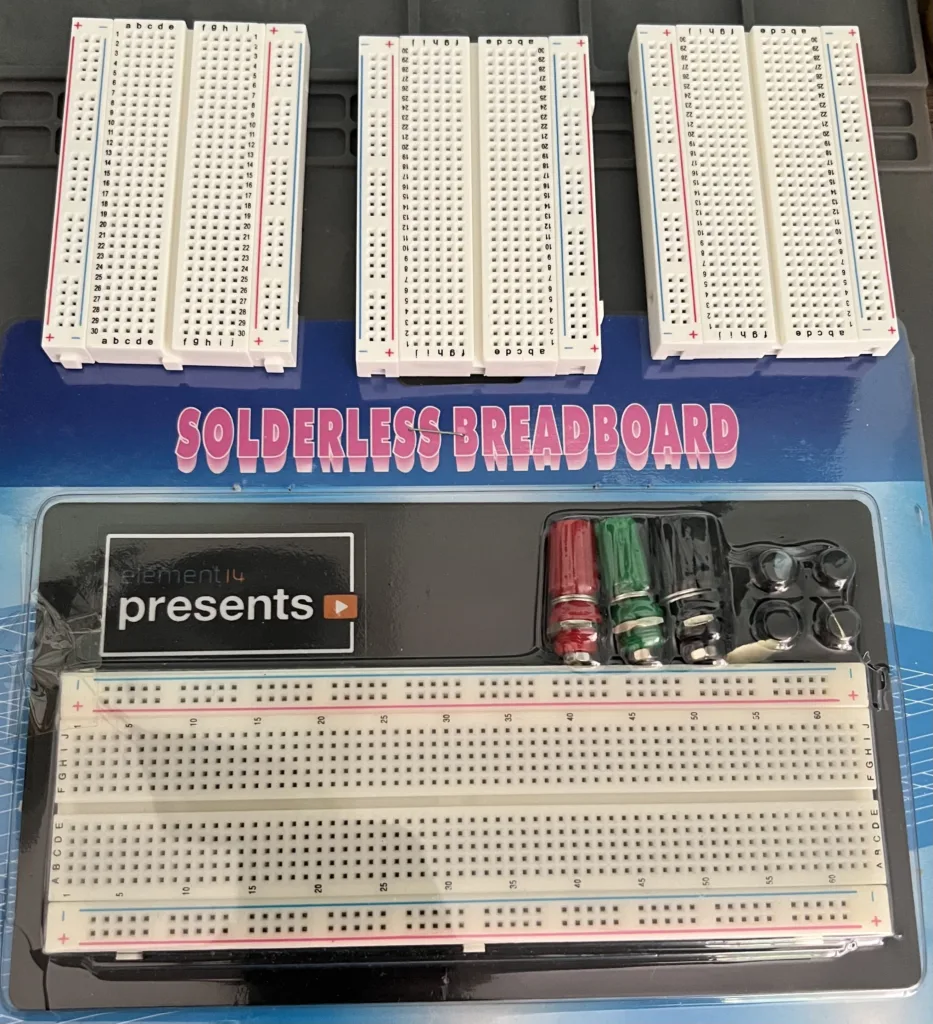
If you want to tinker with circuits, (especially while trying bring robotic creations to life) you’ll find that one tool will be indispensable: the breadboard. This humble piece of equipment is a staple for electronics tinkerers of all levels and is the proving ground for all your circuit ideas. Let’s dive into what a breadboard is, weigh its pros and cons, and see why it’s such a special tool for hobbyists, students, and professionals alike.
What is a Breadboard?

A breadboard is a rectangular plastic board with a series of holes arranged in rows and columns. These holes are interconnected by metal strips beneath the surface, allowing you to easily insert and connect electronic components without soldering. The breadboard’s design enables quick assembly and testing of electronic circuits, making it an ideal platform for experimentation and prototyping.
Pros of Using Breadboards
1. Reusability
One of the most significant advantages of using a breadboard is that you can reuse it over and over! You can insert, rearrange, and remove components as many times as needed without damaging them. This feature is particularly beneficial for beginners and students who are still learning and might need to correct mistakes or try different configurations.
2. No Soldering Required
Breadboards eliminate the need for soldering, making them accessible to people who may not have soldering equipment or skills. This aspect allows anyone to experiment with electronics. Setups and teardowns are also clean and hassle-free.
3. Rapid Prototyping
When inspiration strikes, breadboards allow you to quickly bring your ideas to life. You can test hypotheses, troubleshoot issues, and iterate on designs with ease. This capability is invaluable in educational settings, where understanding through hands-on experience is key.
4. Flexibility and Versatility
Breadboards are incredibly flexible, accommodating a wide range of components and complex circuits. Whether you’re working on a simple LED blinker or a sophisticated microcontroller-based project, a breadboard can handle it.
5. They Come in Different Sizes!
Here’s just two examples in the picture below, but there’s the perfect size breadboard available for any project. Some like the kit from Element 14 on the bottom of the photo come with special connectors, or even power supplies (not pictured) that can snap right onto the end of the breadboard!

Cons of Using Breadboards
1. Limited Current Carrying Capacity
Breadboards are not designed for high-current applications. The thin metal strips and contacts can overheat or fail when subjected to currents above their intended limit, which can be a constraint for power-intensive projects.
2. Unreliable Connections
Over time, the contacts in a breadboard can become loose, leading to intermittent or unreliable connections. This issue can be particularly frustrating when troubleshooting complex circuits, as it adds an additional layer of uncertainty.
3. Not Suitable for Permanent Projects
While breadboards are excellent for prototyping, they’re not intended for permanent installations. The temporary nature of the connections means they can come loose over time, especially in environments subject to movement or vibration.
4. Limited High-Frequency Performance
The layout of a breadboard, with its long metal strips and rows of holes, can introduce unwanted capacitance and inductance at high frequencies. This effect can distort signals and limit the breadboard’s usefulness for high-speed or RF applications.
Ready to Try a Breadboard?
Breadboards are a cornerstone of electronics prototyping, offering an accessible and flexible platform for testing ideas and learning about circuits. While they come with limitations, such as their unsuitability for high-current or permanent applications, they have unmatched benefits for rapid prototyping and education. For robotics students and DIY enthusiasts, mastering the use of a breadboard is a crucial step on the path to bringing more complex and innovative projects to fruition.


